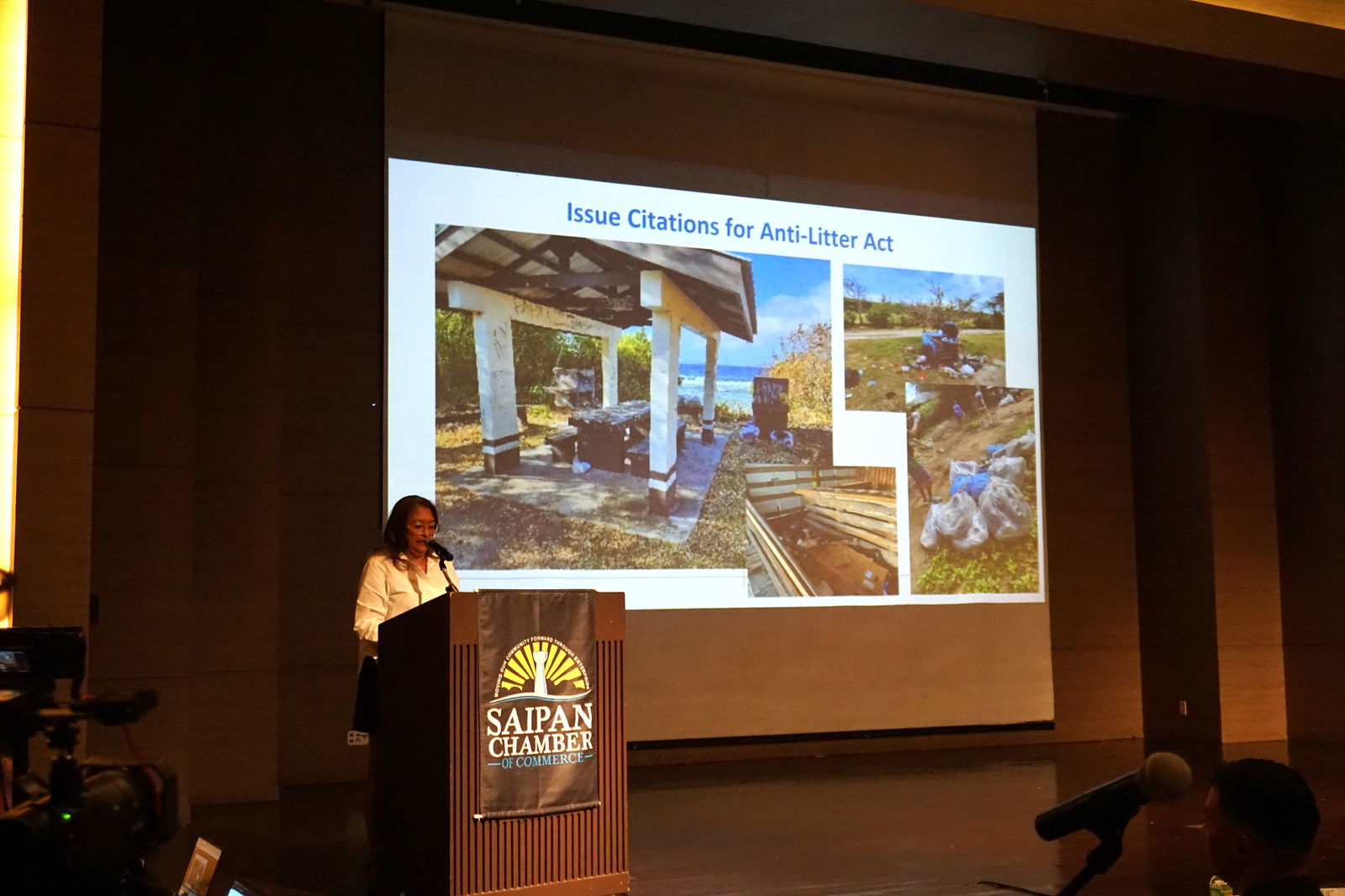
Joshua Wise, vice president of the Saipan Chamber of Commerce, talks about the grave challenges facing the tourism-based local economy.
“WE have no positive outlook,” Saipan Chamber of Commerce Vice President Joshua Wise said on Thursday. “We’re now seeing signs that the economy is collapsing, residents are leaving our population, and workforce is declining. Legacy companies are closing their doors and unless anything changes more businesses will close. We can’t take any of these signs lightly. We need to act quickly and make the right decisions today.”
He said unless the CNMI can get to 500,000 visitors a year, the Commonwealth government risks bankruptcy.
In his remarks at the chamber’s 2nd Annual Economic Forum at Saipan World Resort, Wise outlined the grave challenges facing the CNMI’s tourism-based economy.
“Currently we are in crisis mode. This is not a surprise to anybody,” Wise said in his presentation to dozens of business community members, government officials and island residents.
Wise said the chamber, the Hotel Association of the NMI, and the Marianas Visitors Authority have initiated “Operation 500K,” a strategic plan to bring the number of visitor arrivals in the CNMI to a minimum of 500,000 a year.
He said the forecast for 2024 projects a total of 300,000 tourist arrivals. In 2023, a total of 215,543 tourists visited the CNMI. In 2019, prior to the pandemic, the Commonwealth recorded 487,008 tourist arrivals.
Wise said 500,000 tourists will allow the CNMI tourism industry to “break even” and avoid operating at a financial loss.
He said the tourism industry should target at least 250,000 tourists from Korea, 170,000 tourists from China, and 30,000 tourists from Japan. He did not specify where the remaining 20,000 tourists should come from.
In 2019, arrivals from Korea, China and Japan totaled 249,211; 185,526; and 17,121, respectively.
Wise said the Asian tourism market would need to be supported by seven daily flights from Korea, four daily flights from China, and one daily flight from Japan.
Wise emphasized that the CNMI needs three healthy tourism markets just to “stop the bleeding.”
According to Wise, back in 2017 the CNMI was “on track for a healthy and sustainable tourism industry” with over 653,000 visitors and 5,600 flights.
Wise said Chinese visitors, in particular, are known for purchasing luxury goods, high-end hotel stays, high-end dining, and going on optional tours.
He said in 2017 there were 16 weekly flights from China to Saipan compared to zero in 2023. In April, however, a twice-a-week flight service to the CNMI from Hong Kong resumed.
Wise noted that the CNMI has lost 97% of its second largest tourism market, China.
He said the Palacios administration and the Commonwealth Ports Authority should support the CNMI’s exemption from the U.S. Department of Transportation’s order to limit the number of round-trip flight services between the U.S. and China.
The CNMI’s exemption provided for in Annex VI of the U.S.-China Civil Air Transport Agreement should be reinstated.
Wise is also calling for the implementation of the CNMI Economic Vitality & Security Travel Authorization Program or EVS-TAP, which aims to provide for a viable and reasonable way for properly vetted individuals from China to visit the Commonwealth.
According to Wise, the chamber is also calling for a reduction of landing and terminal fees at the local airport and an increase in MVA’s marketing budget so it can revive the China market.
MVA budget
For her part, acting MVA Board Chair Gloria Cavanagh noted that the tourism agency is currently “operating with half the budget we had six years ago.”
She added, “Just to put it into perspective, the Guam Visitors Bureau’s budget this year is $17 million. They’re investing $24 million in the next year.”
MVA’s primary source of funds is the hotel occupancy tax collections.

Marianas Visitors Authority Acting Board Chair Gloria Cavanagh speaks at the Saipan Chamber of Commerce 2nd Annual Economic Forum at the Saipan World Resort on Friday, May 16.
Cavanagh said in FY 2018, MVA’s budget was $9.1 million. In FY 2024 it is about $4 million.
Cavanagh acknowledged that marketing is a “chicken or the egg” situation because “it takes money to promote the Marianas, but we need visitors to make that money.”
Action items
In her presentation, Cavanagh listed the following “Marianas-wide action items: develop authentic heritage experiences that connect visitors with culture and history; improve blighted properties; enforce the anti-litter law; keep visitors safe at major sites through police presence and security guards; open and maintain public restrooms; improve interisland connectivity by an increase in air seats for Rota and online booking availability for Tinian; and improve scenic sites at Marpi with federal grant money.
She also emphasized that the “number one activity” tourists look forward to on island is “enjoying nature.”
“We need to make it a practice if not a policy to incorporate conservation into development by protecting old … trees, moving and replanting trees when necessary,” she said. “[Keep] our downtown areas and roadways and homes green. This should be part of our plan not an afterthought, because this is what our market needs, our nature.”










